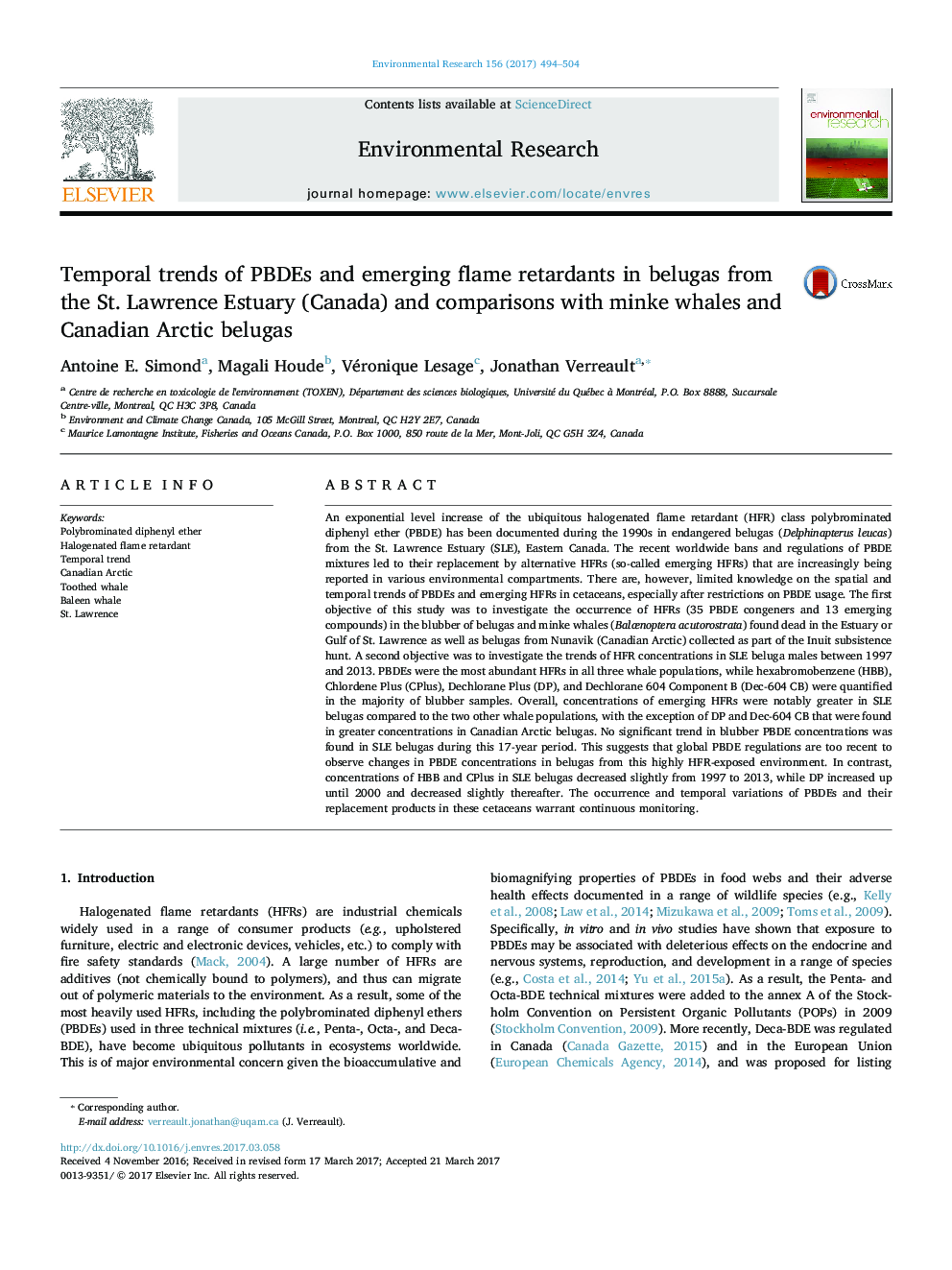| کد مقاله | کد نشریه | سال انتشار | مقاله انگلیسی | نسخه تمام متن |
|---|---|---|---|---|
| 5756454 | 1622547 | 2017 | 11 صفحه PDF | دانلود رایگان |
عنوان انگلیسی مقاله ISI
Temporal trends of PBDEs and emerging flame retardants in belugas from the St. Lawrence Estuary (Canada) and comparisons with minke whales and Canadian Arctic belugas
دانلود مقاله + سفارش ترجمه
دانلود مقاله ISI انگلیسی
رایگان برای ایرانیان
کلمات کلیدی
موضوعات مرتبط
علوم زیستی و بیوفناوری
علوم محیط زیست
بهداشت، سم شناسی و جهش زایی
پیش نمایش صفحه اول مقاله

چکیده انگلیسی
An exponential level increase of the ubiquitous halogenated flame retardant (HFR) class polybrominated diphenyl ether (PBDE) has been documented during the 1990s in endangered belugas (Delphinapterus leucas) from the St. Lawrence Estuary (SLE), Eastern Canada. The recent worldwide bans and regulations of PBDE mixtures led to their replacement by alternative HFRs (so-called emerging HFRs) that are increasingly being reported in various environmental compartments. There are, however, limited knowledge on the spatial and temporal trends of PBDEs and emerging HFRs in cetaceans, especially after restrictions on PBDE usage. The first objective of this study was to investigate the occurrence of HFRs (35 PBDE congeners and 13 emerging compounds) in the blubber of belugas and minke whales (Balænoptera acutorostrata) found dead in the Estuary or Gulf of St. Lawrence as well as belugas from Nunavik (Canadian Arctic) collected as part of the Inuit subsistence hunt. A second objective was to investigate the trends of HFR concentrations in SLE beluga males between 1997 and 2013. PBDEs were the most abundant HFRs in all three whale populations, while hexabromobenzene (HBB), Chlordene Plus (CPlus), Dechlorane Plus (DP), and Dechlorane 604 Component B (Dec-604 CB) were quantified in the majority of blubber samples. Overall, concentrations of emerging HFRs were notably greater in SLE belugas compared to the two other whale populations, with the exception of DP and Dec-604 CB that were found in greater concentrations in Canadian Arctic belugas. No significant trend in blubber PBDE concentrations was found in SLE belugas during this 17-year period. This suggests that global PBDE regulations are too recent to observe changes in PBDE concentrations in belugas from this highly HFR-exposed environment. In contrast, concentrations of HBB and CPlus in SLE belugas decreased slightly from 1997 to 2013, while DP increased up until 2000 and decreased slightly thereafter. The occurrence and temporal variations of PBDEs and their replacement products in these cetaceans warrant continuous monitoring.
ناشر
Database: Elsevier - ScienceDirect (ساینس دایرکت)
Journal: Environmental Research - Volume 156, July 2017, Pages 494-504
Journal: Environmental Research - Volume 156, July 2017, Pages 494-504
نویسندگان
Antoine E. Simond, Magali Houde, Véronique Lesage, Jonathan Verreault,